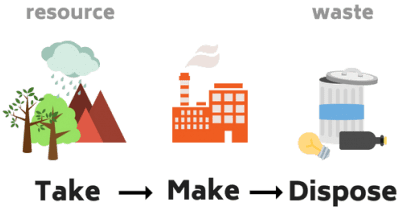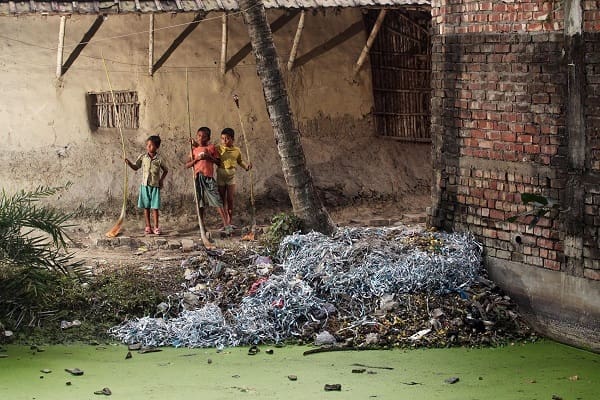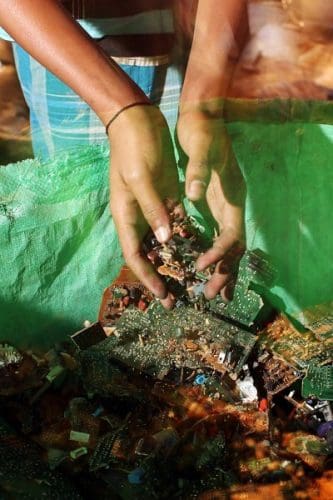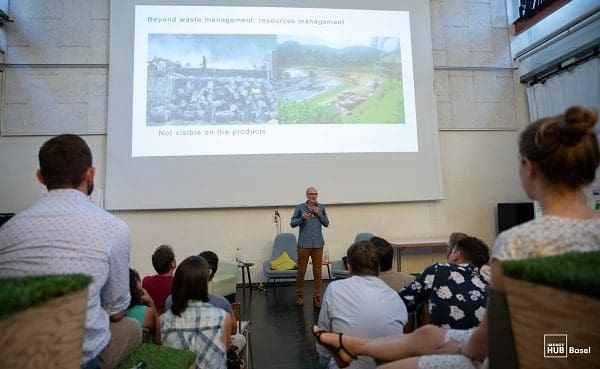Our current model of ‘take, make, dispose’ is linear. And it is not sustainable. Annual global extraction of materials grew from 22 billion tons in 1970 to around 70 billion tons in 2010. A circular economy, on the other hand, retains as much value as possible from materials, resources, products, and parts that are already in circulation. It is a system that allows for long life, optimal reuse, refurbishment, remanufacturing and recycling. Essentially, it follows Mother Nature—it writes waste out of the equation.

WHY SHOULD WE CHANGE FROM A LINEAR STRUCTURE?
At our September event, “What is the Circular Economy?” we learned some pretty troubling statistics—or for a more positive spin on that, “motivation to change our behavior!”
The information shared by presenters Andrea Brown (Director of Impact Management at Quadia), and Laurent Maeder (Project Manager at EPEA Switzerland and Business Lab Co-Lead at Impact Hub Switzerland) showed us the startling reality our current structure has on global resources, and community and individual health.

Growth in per capita income and consumption have been the strongest driver of growth in material use, even more important than the rise in population in recent decades. On the one hand, it means more people are moving into the middle class–which is a good thing. But on the other, it means if current systems of production and consumption will not be changed, nine billion people would require about 180 billion tons of materials annually by 2050—almost three times today’s amount. Yikes! And if my sources are correct, we still only have one Planet Earth, my friends.

This linear cycle puts out an incomprehensible amount of trash in the world. And the visible solid waste is just the tip of the iceberg. What we don’t necessarily see are the wasted resources, resource depletion, conflict due to resource depletion, workers and/or local communities exposure to toxicity, and more.
WHAT ARE SOME SOLUTIONS?
During our CE event, Laurent Maeder talked about the need to address different areas with the goal of creating positive impact:
- Products/services
- Infrastructures
- Materials
- Processes
- Substances
- Supply/value chain
- Network
- Laws
- Certification/Labels
There are already certain companies and methodologies out there working in circular economy. Thank goodness, right?! Cradle to Cradle® is a design concept that was developed in the 1990s by Prof. Dr. Michael Braungart, William McDonough and the scientists of EPEA Internationale Umweltforschung in Hamburg. It stands for innovation, quality as well as good design and describes the safe and potentially infinite use of materials in cycles.
Did you know that around 60% of our clothing is now made using plastics? And when we wash our clothes, tiny micro-fibers get washed away, finding their way into our oceans. An innovator in the textile industries, Lauffenmühle is helping to address this aspect of pervasive micro-plastic pollution. They have developed fabrics that meet the sustainable Cradle to Cradle principle. After a long product service life, they can be returned to the biological cycle without pollutants. At that point, the textiles form the nutrients for micro-organisms and thus for new life, cultivation of foodstuffs, etc. A fine example of ‘closing the loop,’ if I do say so myself.
Some other CE companies we learned about were Fair Phones, Giroflex, Mud Jeans, and re-CIRCLE. If you want to help the transition from linear to a circular economy, vote with your dollar–or rather, your Swiss Frank. Consider supporting these types of businesses when you can.
There is still much to be learned, of course, and much to be done. Luckily, Impact Hub Switzerland together with partners MAVA and Sanu Durabilitas, aim to constitute a Swiss-wide diverse community on circular economy, connecting organizations committed to implementing solutions for the transition. They are locally embedded in 5 key cities in Switzerland, namely Bern, Zurich, Geneva, Lausanne and Basel.
As for this past event, a big thank you to our amazing partners, Andrea Brown and Laurent Maeder, for taking the time to share their expertise. And to our engaged and pro-active community members who joined us to learn and share. Hope to see you at the next one!

Carrie Aikman
